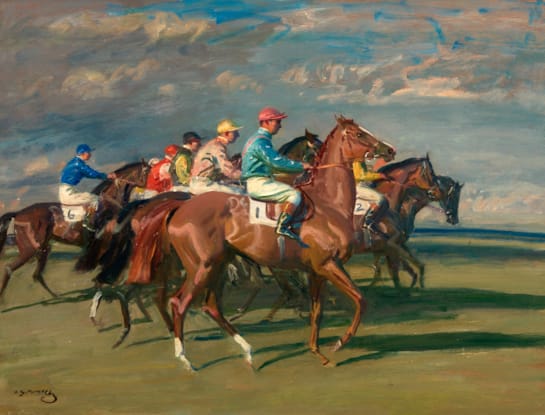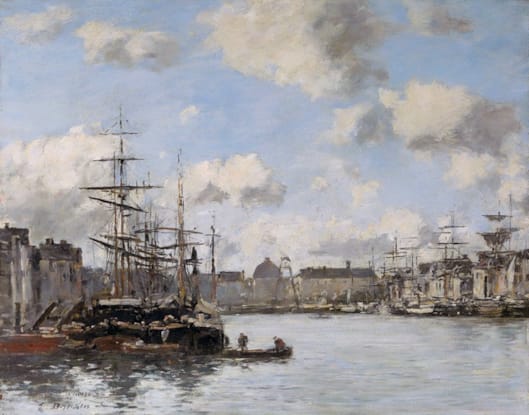Montague Dawson, RSMA, FRSA
(1890 - 1973)
Running Free – The Yankee Packet ‘Dreadnought’
Signed, lower left: MONTAGUE DAWSON
Oil on canvas
20 x 24 in – 50.8 x 61 cm
Frame size
26¼ x 30¼ in – 66.7 x 76.8 cm
Oil on canvas
20 x 24 in – 50.8 x 61 cm
Frame size
26¼ x 30¼ in – 66.7 x 76.8 cm
Tel.: +44 (0)20 7839 7693
Provenance
Frost & Reed, London, 26 March 1933, reg. no.5331;
Repurchased by Frost & Reed, London, 11 January 1934, reg. no.5557;
Private collection, UK;
MacConnal-Mason Gallery, London;
Private collection, UK
Repurchased by Frost & Reed, London, 11 January 1934, reg. no.5557;
Private collection, UK;
MacConnal-Mason Gallery, London;
Private collection, UK
Built by Currier and Townsend of Newburyport Massachusetts for the Red Cross Line, Dreadnought was launched on 6th October 1853. A defining aspect of the packet ships was that they sailed to a regular schedule regardless of passenger numbers or cargo, and Dreadnought was destined to run between New York and Liverpool. She was commanded by legendary captain Samuel Samuels (1823-1908) who had run away to sea aged eleven and despite numerous mishaps – being press ganged and suffering from sea sickness – became a captain by the age of twenty-one. He oversaw the construction of the Dreadnought and commanded her for over a decade. With his vast experience and superb seamanship he would fly full-sail in all but the most severe weather giving rise to the Dreadnought’s nickname ‘The Wild Boat of the Atlantic’. As such, she became one of the most reliably fast vessels afloat, meeting her schedules with greater accuracy than any other ship.
Biography
Montague Dawson was born in London, the son of a sea captain. His grandfather was the successful Midlands landscape painter, Henry Dawson (1811-1878) who had himself moved to Chiswick. Montague Dawson studied under the marine painter Charles Napier Hemy (1841-1917) who, born in Newcastle, lived in London for some years before moving to Falmouth. On completing his studies, Dawson joined a commercial studio specialising in nautical illustrations.
During the Great War, Dawson served in the Royal Navy, he contributed illustrations to magazines including “The Sphere”, and having witnessed the surrender of the German High Seas Fleet in 1918, a complete issue of The Sphere was dedicated to the event. After leaving the Navy, Dawson took up painting full-time, living first in London before moving to Milford-on-Sea in Hampshire. Dawson had first exhibited at the Royal Academy in 1917, a Naval subject “The Eyes of the Fleet”, and although frequently painting contemporary marine and naval compositions, his particular interest was in historical works, clipper ships and galleons. Whatever the subject, his paintings are marked by his acute attention to historical detail and his knowledge of ships and the sea. During the Second World War, Dawson worked as a war artist, portraying Royal Naval and US Navy actions.
His popularity was such that the New Mariners Museum in Newport Rhode Island opened a wing devoted to his works in 1975, and Presidents Eisenhower and Johnson owned paintings of the US Navy Frigate Constellation. A member of the Royal Society of Marine Artists and a fellow of the Royal Society of British Artists, Dawson was the foremost marine painter of the 20th century.
His works can be found in museums in: Cambridge; Edinburgh; London, National Maritime Museum; Portsmouth, Royal Naval Museum; Southampton, City Art Gallery; North Carolina, Museum of Art and Newport Rhode Island.




_1422024T101533.229.jpg?width=550&height=415&format=jpg&quality=80&mode=max)